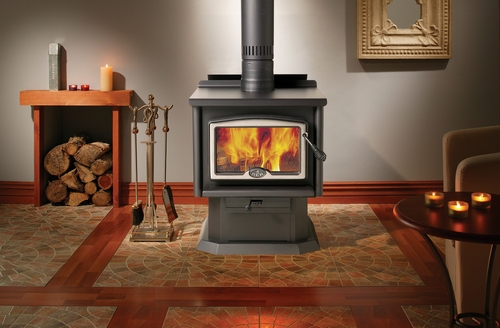It is common to find wood burning stoves in places that experience winter or severe cold weather. These stoves keep homes warm and are a perfect alternative to electrical heating when power goes out. However, log burners come with several risks. They can cause fire or toxic gases when burning fuel. If you intend to install and use a wood burning stove, here are some guidelines to keep your home and loved ones safe.
Maintain Clearance between Stove and Surroundings
Wood fuel stoves emit high levels of heat when burning logs. As such, they can burn things kept too close to them. A general rule of thumb is to ensure that your stove maintains the clearance requirements specified by the manufacturer or your local fire department. In most cases, wood burning stoves should be at least 3 feet away from curtains, furniture and other household items. To avoid the risk of fires, you should never put highly combustible materials near the stove. These include fuels such as kerosene, gasoline and even logs themselves.
Burn Only Seasoned Wood
The best wood to burn in a wood fuel stove is that which has dried over a period of six months to two years. This process of drying wood is known as seasoning. It helps to get rid of moisture levels so that logs produce a clean flame without smoke. It is therefore important to burn only seasoned wood in your stove. Avoid burning unseasoned wood, paper or trash as they emit toxic gases as well as creosote, a highly flammable byproduct of incomplete combustion that causes chimney fires.
Equip Your Home with Anti-fire Equipment
Burning logs in your home presents a significant risk of fires. As such, it is important to equip your home with anti-fire equipment. Most homes with wood burning stoves are equipped with fire extinguishers. This however is not enough because it is better stop serious fires in the first place. Be proactive and install smoke detectors as well as carbon monoxide alarms. These gadgets can warn you in times of danger such as fire hazards and build up of toxic gases in your home.
Have Your Wood Fuel Stove Inspected Regularly
Well-maintained log burners reduce the risk of fires and continue to operate at optimum conditions. As a result, it is advisable to have your stove inspected on a regular basis. Most manufactures recommend stove inspections at least once a year. These inspections typically involve a chimney sweep and cleaning of stovepipes. This in turn helps to remove soot and creosote from the walls of the flue and stovepipes, thus reducing risk of fires and improving ventilation.
Other safety practices you could maintain while using a log-burning stove include keeping children and pets away; installing a safety gate around the stove; and monitoring fire at all times. Never leave wood burning unsupervised in a stove as this can lead to fires. In addition, ensure to follow the safety guidelines that come with your wood-fuel stove manual. With those few tips, it is possible to keep your home warm and safe while using a wood burning stove.
This article was authored by Arthur Smith, an officer with the Scottish Fire and Rescue Service. Arthur has been raising awareness about fire safety for more than 3 years. If you want to use safe and certified wood burning stoves, he recommends you visit PG Fire Places today.





